Maybe you like the idea of driving an electric car – but not the idea of worrying about how far you can drive before you run out of electricity. Or how long you’ll have to wait while it recharges – before you can resume driving.
Behold the plug-in hybrid.
It can get you down the road without burning any gas – if your trip is within the range of its fully-charged batteries. And when you run out of juice, you won’t have to stop to recharge – because there’s an IC engine back-up. It kicks in when the batteries wilt – and lets you keep going.
Without waiting.
Refill – or recharge – as you prefer.
A more practical electric car.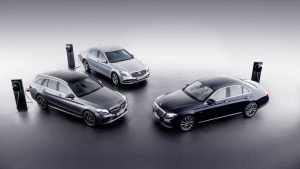
Plug-ins also help the car companies keep the itchy scratchy government off their backs – which is the real reason for all this plugging-in.
Most people outside the car business – and not hip to the doings in DC – aren’t aware of the pressure car companies are under to meet the fuel efficiency “targets” decreed by federal bureaucrats. These may go up to 54.5 MPG on average just a few years from now.
There is only so much you can do with a purely gas-engined layout.
Get rid of the gas engine – or at least, get rid of it part of the time – and you make the bureaucrats happy.
The bigger trick is making buyers happy about it.
The GLC350e is the plug-in hybrid version of the Mercedes GLC-Class SUV.
It’s also the first plug-in hybrid in the luxury compact SUV class.
That won’t last, though. BMW, Audi and others will have plug-in versions of their compact SUVs in showrooms sometime next year. But for now, the Benz has the field – and the outlets – to itself.
Base price is $49,990.
That’s about $8k more than the price of the non-hybrid GLC300 with the optional 4Matic all-wheel-drive system – which the GLC350e comes standard with. But the higher up-front cost is offset somewhat by a $4,460 federal tax rebate (see here for more) and, of course, the potential to substantially reduce what you spend on gas.
You get one other thing for the money, too.
More power.
Though touted as a gas-saver (which it can be) the GLC350e’s hybrid powertrain is also substantially stouter than the non-hybrid GLC300’s: 315 hp and 413 ft.-lbs. of torque vs. 241 hp and just 273 ft.-lbs. of torque.
Part of the reason for that is necessity; to counterbalance the increased weight of the hybrid’s batteries and related gear. But the more important reason is to give buyers a more emotionally satisfying reason to buy this thing than the fact that it uses less gas.
We are talking about a Mercedes, after all.
WHAT’S NEW
This is the first year for the availability of in the U.S. of the plug-in hybrid version of the GLC.
And if plugging in isn’t your thing, there’s another new thing . . . the V8 powered AMG GLC 63 (reviewed separately). That one can’t go any miles without burning oceans of gas. But you’ll savor every mile, just the same.
May its tribe increase.
All GLCs get standard heated wipers – but Android Auto/Apple Car Play are is still (strangely) optional. Strangely – because smartphone integration has become almost a given standard feature in cars that cost a lot less than any Mercedes.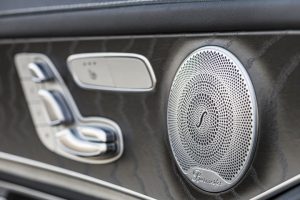
In defense of Mercedes – elliptically – other luxury car brands are guilty of the same offense. Ironically, it is now the case that the lesser-prestige/mass-market stuff comes standard with more stuff – in terms of apps and such – than many of the higher-prestige rides.
But then, no matter how much money you spend on a Chevy or a Hyundai – and no matter how nice they may be – they’ll never be a Mercedes.
An electric car for short hops that’s capable of longer hops – without lengthy pit stops.
More power and stronger, easier thrust than the non-hybrid GLC300.
Batteries don’t eat up the cargo space.
WHAT’S NOT SO GOOD
On longer hops, the mileage drops.
Plugging in isn’t cheap.
Or light.
The GLC350e has two of everything.
Two batteries – one small one to start the gas engine, the other (a bigger one) to drive the electric motor. Two fuel doors – one for gas, the other for plugging in.
Combined, the 2.0 liter gas engine and the 8.7 Kilowatt-hour lithium-ion battery/electric motor produce 315 hp and 413 ft.-lbs. of torque – enough to get the GLC to 60 in about 6 seconds flat – which is about the same time to 60 as the non-hybrid GLC300 4Matic, which only has the 2.0 liter four cylinder engine, 241 hp and 273 ft.-lbs. of torque. But doesn’t have the extra 563 pounds of batteries and related hybrid equipment (for a total curb weight of 4,564 lbs.) that the GLC350e is lugging around.
That’s the Catch-22 with battery-powered cars. They are heavy cars – and heavy is the natural enemy of both acceleration and efficiency.
On the fully topped-off batteries, you can go about 20 miles – which is only about a fourth as far as most pure electric cars can travel on a charge. But they have to stop and wait when their charge runs down.
The GLC350e doesn’t.
While you’re on the batteries, your gas mileage is essentially infinite – because you’re not using any gas. But after those 20 miles – less, if you drive fast or hard – the gas engine automatically steps in to spell the tiring batteries. At this point – and until you can recharge the batteries – expect to average in the mid-20s. That’s about the same as the non-hybrid GLC300 4Matic – mainly because of all that extra weight it’s lugging around.
So, the key to making the most of the efficiency potential of the GLC350e is to keep the batteries charged up – and keep the gas engine off.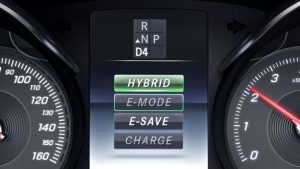
Which you can do not only by keeping plugged in but also by selecting E-Mode, which will nix the usual (in a hybrid) IC-engine assist during acceleration, at least until the batteries can no longer propel the GLC without IC assist.
Or, save the batteries for (cue Austin Powers voice) later.
The GLC350e has two additional driver-selectable modes: E-Save and Charge. These hold the battery’s charge in reserve, keeping the gas engine on almost all the time and providing most of the power needed for propulsion.
Well, if you lived in Europe, there are places you can’t drive except in electric-drive cars. But those places might be too far away from your plugging-in spot. E-Save and Charge let you drive to the areas where you can’t drive IC-engined cars without draining the batteries on the way there. Once you are there, you can then continue driving within the law as an electric car.
That isn’t any advantage here, of course . . .not yet. Because there aren’t yet parts of this country where IC power is verboten. But it doesn’t take a rocket scientist to foresee a time, not too far distant, when there might be internal combustion engine No Go zones here as well as there.
In which case, you’ll still be be able to drive here as well as there.
Free lunches are hard to find.
Electric cars don’t burn any gas, but they don’t go as far as IC-engined cars – and there is the not-small hassle of having to wait while they recharge. At least 30-45 minutes and that’s if you have access to a 240V “fast” charger. Otherwise, it’s several hours on standard 120V household current.
You also have to plan your driving around these limitations. If the batteries aren’t charged, for example, you can’t just get in and go. Maybe you forgot to plug in last night – and now you’re stuck taking the bus.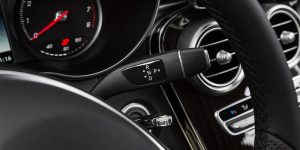
This is probably why electric cars are a hard sell, despite the favorable press – and the favorable treatment by the government (subsidies, tax credits, etc.).
Most people need to get going – now. They don’t have the time to wait for their car to recover before it can get going again. Or just don’t want to have to worry about it.
Reality check.
But the car companies need to sell electric cars – lots of them – because only electric cars meet “zero emissions” regs and and only electric cars sold in large numbers will help them significantly increase their “corporate average” fuel economy numbers. Which they’re desperate to increase because if they don’t the Feds will abuse them with heavy fines, which will make it harder for them to sell any cars, IC or electric.
Another realty check.
The plug-in hybrid offers a work-around. It’s capable of part-time electric operation, which helps Mercedes comply with the regs – but because it’s not tied to an electric umbilical, it doesn’t impose hassles on its owner.
You can drive the GLC350e like any other car. No range anxiety. If you forget to plug it in or it’s just not convenient, no worries. 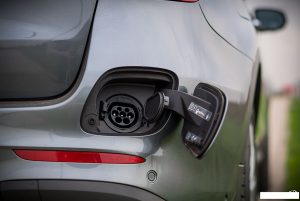
The 20-miles-or-so range on the batteries isn’t nearly as far as a purely electric car can travel on its batteries. But the payoff here is that when the GLC’s battery pack experiences recharge ED – so to speak – it isn’t necessary to find an outlet. You don’t have to stop – or wait. You can just keep driving – as long as there’s gas in the tank. And you can refuel in the usual five minutes or less.
The point is you can go either way, as you please – and when you please. That gives you the versatility no purely electric car can deliver. And there is the potential for much better mileage than an IC car (or even a standard hybrid without plug-in capability) can deliver.
But no free lunch here, either.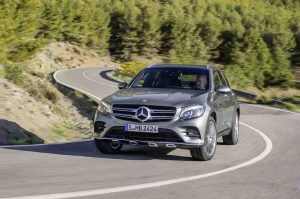
First, there’s the cost of being able to plug-in About $8,000 up front vs. the regular GLC300 4Matic. The tax credit helps chew that down, but you’re still looking at several thousands bucks up front – which will probably take several years to chew down in over-the-road savings on fuel.
Second, the GLC350e’s batteries and other hybrid gear add the equivalent in weight of a fully-dressed V8 engine to the curb weight and once the batteries are depleted, the 2.0 liter gas engine has to lug all that around.
I averaged about 24.4 miles per gallon in between charges – which is about a third of the advertised 74 MPGe on the window sticker.
This MPGe thing (more here) is very confusing. It isn’t an average of the mileage of the gas engine and the hybrid powertrain. It is a measure of kilowatt-hours vs. gallon-of-gas equivalence. What your actual mileage will be will depend on how far you drive and whether you recharge in between drives.
That said, if your drive is about 20 miles or less, you can definitely realize some pretty spectacular reductions in fuel consumption. But if your drive is farther – or you haven’t got time to recharge – your mileage will vary.
And probably not in the direction you’d like it to.
On the upside – and despite all that the weight – the GLC350e launches with almost V8 authority. Which it ought to, given the 400-plus ft.-lbs.of torque that’s on tap. It may not be quicker by-the-numbers than the GLC300, but it feels quicker and the quickness is easier. You hardly need to depress the accelerator pedal to get very impressive acceleration – a function not only of all that torque but also of all that torque being at your command at just 1,300 RPM.
The non-hybrid GLC300 will accelerate just as quickly, but you have work it.
Transitions between all-electric, IC engine and some combination of both are almost impossible to divine except by watching the instruments (the tachometer needle will fall to zero RPM when the gas engine shuts down) or by the haptic accelerator pedal (in E-Mode) which encourages a light foot by pushing back slightly when it thinks you’re pushing a bit too hard.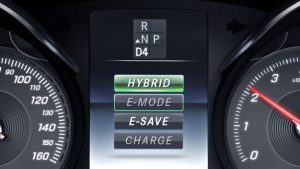
This is intended to coach you to drive in such a way as to maximize the range/efficiency of the layout.
The almost 600 pounds of extra weight has some advantages, too. The usual – and pleasant – Mercedes feeing of ingot solidity is enhanced. Drive this thing and then drive a CR-V or some other mass-market crossover and you’ll immediately notice how flimsy they feel in comparison.
And one more thing: The GLC is built on a rear-drive layout; most of the lesser crossover SUVs are built on a FWD layout. The advantage of the RWD layout is better weight distribution and power delivery. The Benz’s power usually flows to the rear wheels; if they begin to slip some is sent to the front wheels.
It’s the reverse in a FWD-based system.
The RWD-based layout imparts better balance and driving feel, especially during high-speed cornering. It’s why almost all the higher-end crossover SUVs are built this way – while the lesser models are built the other way.
When hybrids first appeared, the idea seemed to be to make them look like hybrids – like something different, to emphasize that they were something new. But hybrids haven’t been new for going on 20 years – and this one looks no different from the non-hybrid GLC.
Except for that extra little door on the rear bumper (passenger side). Pop it open. That’s your plug-in port. The plug-in nozzle (it’s shaped to echo a fuel pump nozzle) inserts here. You plug the other end into the outlet of your choice.
Otherwise – from the outside – this is just another GLC.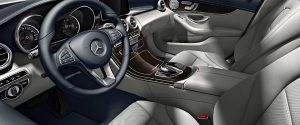
Which is a good thing, especially from the inside.
Though technically a compact, the GLC isn’t tiny – or tight. In fact it has nearly as much passenger space (including 40.8 inches of first row legroom and 37.3 inches of backseat legroom) as the mid-sized GLE (40.3 inches and 38.3 inches, respectively) and much more space than the subcompact GLA (which only has 27.1 inches of second row legroom).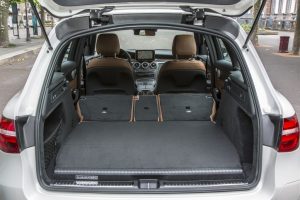
Cargo capacity is 19.4 cubic feet behind the second row and 56.5 cubic feet total.
It is worth mentioning here that the GLC’s SUV layout makes hiding the batteries easier. In the Ford Fusion Energi sedan I test drove last week, there was almost no trunk space (about 9 cubic feet) which left you with the Croco-Stimpian absurdity of a large family sedan with less room for cargo than a two-seater sports car.
Hybrid or not, the GLC is meticulously and tastefully trimmed as well as thoughtfully designed. Examples of this include the thumbwheel control on the center console for the radio volume and the stylish but also functional ball-type air vents, which can be angled to direct airflow in more nuanced ways than up or down (and left or right) box-type air vents.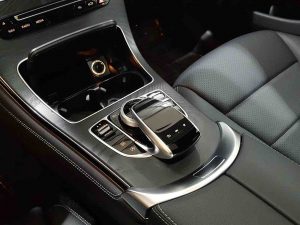
You can also get higher-echelon Mercedes amenities such as a fragrance dispenser (in the glovebox) and a top-drawer Burmester audio system, an upgraded 8.4 inch LCD display, ambient interior lighting and AMG trim.
You can also get the AMG engines – either the twin-turbo V6 or the twin-turbo V8. But that’s another review.
THE REST
As a kind of counterpoint to the idea of plugging-in, consider what a diesel engine could offer in terms of mileage as well as other things – including a simplified drivetrain and no need to subsidize or tax rebate anything.
The Land Rover Velar, for instance. It offers a diesel engine that gets 26 city, 30 highway – so it averages about 28 MPG. That is not quite 74 MPGe (as the Benz touts) but it is always 28 MPG. The Benz’s spectacular efficiency claims are valid but only if you keep it on the electric side most of the time – and that’s going to be a challenge if you need to drive more than 20 miles at a time.
But diesels are on the Endangered Species List because even though they make all kinds of sense – and are extremely clean – they will never be “zero emissions,” even part of the time.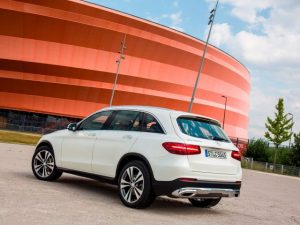
And that’s not good enough for the government – no matter how good it could be for us.
THE BOTTOM LINE
Part-time electric cars like the GLC350e are expensive – and their efficiency advantage is hugely situational. But at least you’re not tied to an electrical umbilical – and you don’t have to wait for a recharge.
. . .
Got a question about cars – or anything else? Click on the “ask Eric” link and send ’em in!
If you like what you’ve found here, please consider supporting EPautos.
We depend on you to keep the wheels turning!
Our donate button is here.
If you prefer not to use PayPal, our mailing address is:
EPautos
721 Hummingbird Lane SE
Copper Hill, VA 24079
PS: EPautos magnets are free to those who send in $20 or more. My latest eBook is also available for your favorite price – free! Click here. If you find it useful, consider contributing a couple of bucks! 


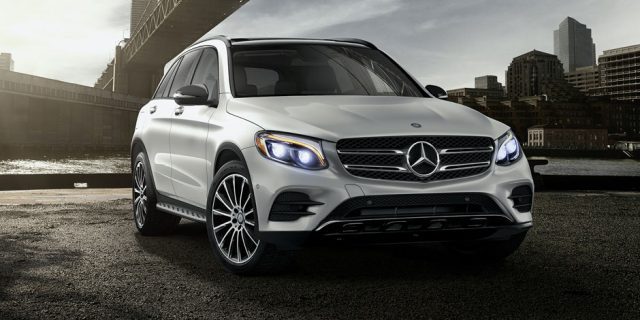

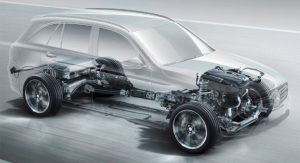
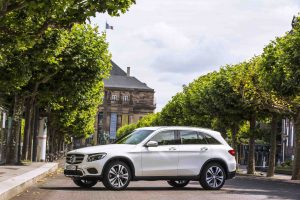

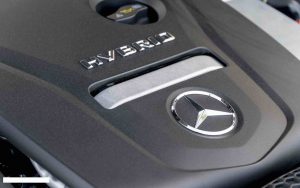
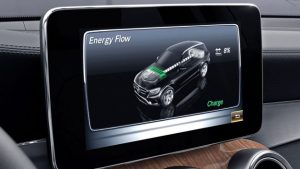









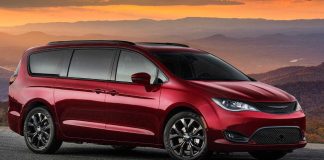
Electric cars get their electricity from coal fired power plants, which may or may not make more pollution than an IC or diesel motor.
That torque figure is what people should be paying attention to. The old GLK Bluetec (turbo-diesel) that I liked so much only had 369 ft-lbs. This is over 400, which granted, has more mass to get moving, should still be very zippy in city traffic. Point-and-shoot driving in the GLK was effortless (you could have any lane any time you wanted) – this should be even better because the electric motor gives you that torque instantly.
I live in Maine.
The local asshats have free electricity for their SUBSIDIZED cars, but I cannot get free gasoline. They think I’m crazy. I’m not crazy, or stupid. Clerks tell me I don’t pay for electricity at their station…Yeah, and I don’t cover payroll either…
This shit MUST stop.
QHM
I used to have a GLC. It was made by Mazda, and compared to this MB GLC, it wasn’t much more advanced than a model T. With a basic set of craftsman tools and a Saturday afternoon, I could fix most any problem it had. I sometimes regret selling that little car.